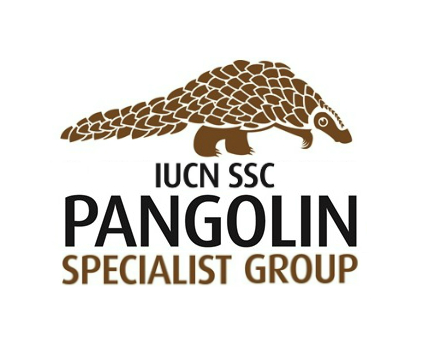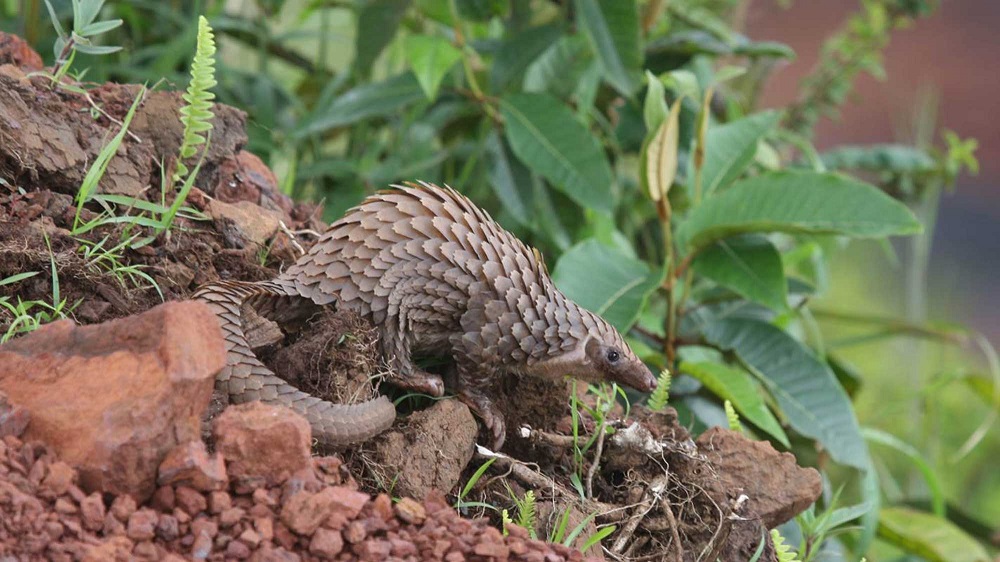
DAN CHALLENDER: That was a quick five years! I remember the second World Pangolin Day back in 2012. We had just been given the go ahead by IUCN to launch the new Species Survival Commission (SSC) Pangolin Specialist Group, and I wondered how big World Pangolin Day would be, especially as it focused on pangolins – back then a group of species that few were very familiar with. How things have changed in the five short years since.
World Pangolin Day, celebrated on the third Saturday of February, has become a chance for everyone to celebrate pangolins and generate support to help secure their conservation. Back in 2012, this involved mostly social media posts on Facebook and Twitter and other platforms. Today, however, it is increasingly the date in the calendar if you’re interested in pangolin conservation and looking to make some noise to generate support for the scaly critters. Last year for example saw celebrations, parties, bake sales, scientific meetings, fundraisers, presentations, and community events in countries ranging from the US and UK to Nepal, Cameroon and Vietnam to name a few. As I write this a few days before 18th February 2017, World Pangolin Day 2017 is shaping up to be the biggest one yet. Even Google has joined in the fun with a multi-day Google Doodle series to celebrate pangolins for Valentine’s Day, the week before World Pangolin Day.
The prolife of pangolins has skyrocketed in the last five years and the species are at last gaining recognition. Pangolins have been broadcast into people’s living rooms through media attention, for example via the BBC, CNN, and the Guardian, and awareness is equally being raised in range states, for instance in Nepal, South Africa, Indonesia and Cameroon. Pangolins are also starting to receive the level of support that is needed to bring about real change, especially in policy arenas, such as CITES, the Convention on the International Trade in Endangered Species of Wild Fauna and Flora, where at the 17th meeting of the Conference of the Parties in Johannesburg in late 2016, all eight pangolin species were uplisted to Appendix I with near unanimous support from the 183 member countries.
Members of the Pangolin SG have been at the forefront of efforts to conserve pangolins: large projects have been initiated by foundations such as Fondation Segré, and there is on-going work within range states, with excellent examples led by Pangolin SG members at the Tikki Hywood Trust in Zimbabwe, Save Vietnam’s Wildlife in Vietnam, and MENTOR Progress On Pangolins in Cameroon, a cooperative program hosted by the Zoological Society of London and funded by the U.S. Fish and Wildlife Service. Equally, the Pangolin SG continues to support the Parties to CITES through the provision of technical information, and our members, such as those at TRAFFIC continue to show leadership in researching trade. Importantly, the Zoological Society of London continues to be the institutional host of the Pangolin SG and a true champion of pangolins. Indeed, on the evening of 21st February ZSL hosting a scientific event on pangolins.

White-bellied pangolin (C) Tim Wacher/ZSL
This sixth World Pangolin Day coincides with the Pangolin SG’s fifth anniversary. The group exists as a voluntary network of experts on pangolins and their conservation, and includes field biologists, veterinarians as well as social scientists, policy experts and inter alia, geneticists, and serves as an advisory body to IUCN. As a group we have seen some conservation wins since 2012, and some of the work of members of the group is highlighted on the above links. Recent blog posts on the IUCN World Conservation Congress and CITES CoP17 also showcase the group’s contributions to these important meetings. However, as we begin the new IUCN quadrennium, which runs from 2017-2020, there is much to be done. All pangolins remain threatened with extinction according to The IUCN Red List of Threatened SpeciesTM, due primarily to overexploitation from poaching for wildlife trafficking in the animal’s parts and derivatives, and for use at the domestic level.
The Pangolin SG’s global conservation action plan, ‘Scaling Up Pangolin Conservation’, published in 2014, helped to introduce pangolins to people both within and outside the conservation community and created a road map to conserve them. But, given how the conservation landscape has changed for the species since, there is a pressing need to focus on action planning in more detail, such as at the species, regional and national level. Similarly, given increasing research attention on the species, there is a growing body of evidence with which to inform new status assessments on the IUCN Red List. Both of these can be considered immediate priorities for the Pangolin SG. Beyond this planning and assessing is the need to develop and implement actions on the ground, working with a range of government and non-government stakeholders globally. Part of the role of the Pangolin SG will be to provide the evidence base and technical contributions to ensure that support is in place where it is most needed to conserve the world’s scaly anteaters.
As we celebrate World Pangolin Day 2017, we look forward with determination to continuing to develop and implement meaningful actions to conserve pangolins, and to ensuring pangolins are even better off at the end of the next five years.
Dr Dan Challender, Chair, IUCN SSC Pangolin Specialist Group

